Digging wells - do not be fooled by the simplicity of work
Digging a well is only at first glance a simple task. It only seems that choose a place, make a circle of one and a half meters, take a shovel and go ahead. And how to deal with quicksands, unexpectedly meeting large stones, tree roots, high soil moisture. There are so many problems that involuntarily recall the famous saying - it was smooth on paper, but they forgot about the ravines. Therefore, digging wells requires very careful preparation and thinking through the entire algorithm of actions in advance.
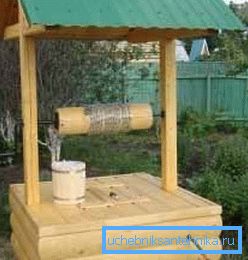
Foreground: safety engineering
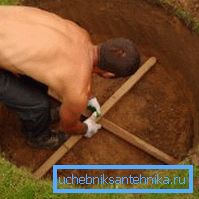
First, you have firmly decided on the level of occurrence of your aquifer. For a well it should be no deeper than 20 meters.
Otherwise:
- it is better to dwell on the drilling of a well for which a passport will be required;
- In addition, if the well is deeper than 20 meters, it will also have to draw up permits, less than 20 - it does not require documents.
Secondly, let's say right away, we advise you to take a very simple and much safer way - by digging a well in an open way. Another thing is that this method is not always applicable from the very beginning, and almost never succeeds in confining ourselves to open digging to the very end, you still have to go deeper down with shovels.
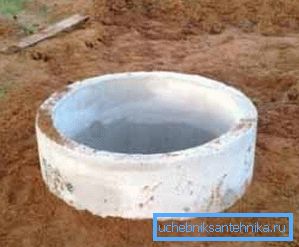
Open way
One inconvenience - here is digging a well with an excavator. If you have too heavy ground or enough space around to turn into a plowed field, then the open method will be much faster and much safer.
For this:
- from the surface itself and to the aquifer, all work is carried out first with the ground, which is not afraid that it will collapse;
- the created recess will have the shape of a funnel, but its recess, already in the water, should be at least 20 cm larger than the reinforced concrete ring, which will fall to the very bottom;
- with the help of a winch, lower the first ring and align it very carefully;
- on this ring for the well from above we lower all the others one by one, aligning them and filling them with soil on the sides;
- before filling the seams between the rings are concreted both from the inside and from the outside;
- if all the work is carried out consistently, special sealers are used to work on the seams, and the filling is carefully tamped and made with coarse sand with the addition of crushed stone, then the algorithm will eventually lead to the top of the well to the very top;
- upon completion, it will only be necessary to concrete the joint between the uppermost ring and the ground.
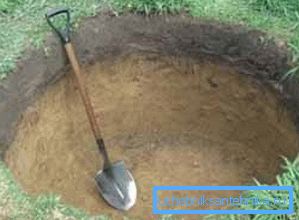
Helpful advice! The tamping of the outer ground around the rings is very important, but we do not advise it to be too active. In any case, avoid excessive pressure on the joints between the rings. The displacement of the rings relative to each other may occur quite unexpectedly, but the correction of this error may require too large costs, especially if the joint is not the last.
We dig only down and manually
Another way of digging is “closed”, without the use of technology, although you will not be able to do without a winch, because the weight of the rings is more than 500 kg (depending on the size).
Progress
The course of work is also quite predictable:
- First, mark the circle of the future placement of the well., which should also be 20 cm larger than the ring.
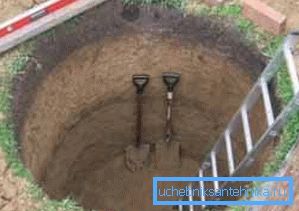
- We dig a round hole, so that the first ring could be immersed in it, but not completely - let it remain up to 10 cm above the ground (the standard height of the rings for these purposes is 90 cm, so the pit should initially be 70-80 cm deep, taking into account the subsidence of the soil ).
- Install the winch over the pit.

- We submit the first ring, fasten it to the rafters and lower it into the pit.
- To say that by carefully aligning the position of the ring, it is to say nothing - the position should be just perfect both vertically and horizontally, here in no case can not do without a level.
- From above we establish the second ring and we concrete its connection with the first.
- We deepen the hole in the center by 80 centimeters.
- We continue to extract the soil closer to the edges of the pit so that the rings descend spontaneously down under their own weight.
Helpful advice! It is generally accepted to extract the soil in this way - from the center to the edges. But we advise you to change tactics, if the ground is solid, we advise you to change tactics and start working from the spot under the ring, gradually moving to the center. So it will be more convenient, as they say experienced masters.
- Work on building such a rack from the rings continues until there is water below.

- The first water along with the lowest soil is removed and while the work is suspended for 12 hours, the well will be filled with water.
- After this time, the bottom is cleaned again.
- It is likely that such cleaning will have to be repeated more than once, until the persistently penetrating so-called “water veins” appear on the bottom of the mine.
- When this is noticed, the well is already left for 20-30 hours.
- Then we pump out the water, clean the bottom and proceed to the organization of the bottom of the structure in the form of a multilayer structure of the following type:
- a layer of fine sand;
- a layer of coarse sand;
- a layer of schungite centimeters in 30 - a mineral with very high absorbing and disinfecting properties, it has long been used in the construction of wells;
- then lay a layer of medium-sized pieces of coal;
- above - quartz gravel;
- even higher - silicon chips.
Helpful advice! Given the six layers at the bottom of the well are the ideal design option, always strive for exactly this. But if there is a desire to save, speed up and simplify the process, you can combine the two lowest layers without sacrificing the thickness, just as you can combine the two upper layers. We recommend adding quartz deposits in the form of rounded stones of medium size as the topmost layer.

Safety
Digging a well refers to work with increased requirements for compliance with safety regulations, among which, in addition to the simple question of where to put the clay after digging the well, we primarily mean:
- Do not do work alone. And it's not even that the work is physically hard. It is accompanied by a high probability of occurrence of force majeure, from the sudden appearance of water to gas emissions, when an assistant is needed to get out of the well.
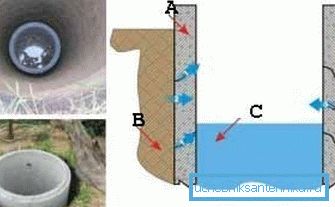
- In order to avoid a sudden accumulation of combustible gas in a high concentration inside a well, periodically burning torch it is necessary to check its current presence. If the torch is quickly extinguished - gas content exceeds the norm.
- Works need to be carried out in a special working robe and in a protective helmet.
- Periodically conduct ventilation of the mine, for which you can use at least domestic fans or vacuum cleaners.
findings
Digging or digging wells is a very responsible enterprise. That's when it does not interfere with the instruction being at hand, and someone more experienced could help with advice and deeds. The video in this article can be the first, but you will have to take care of the second yourself.
In any case, do not do work alone, safety here will be very important. The price of a mistake here is not only the lack of water in the house, but also your health.